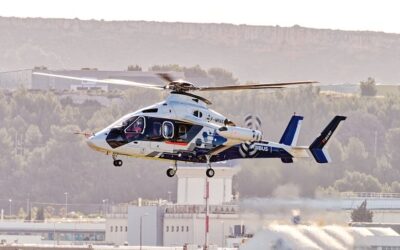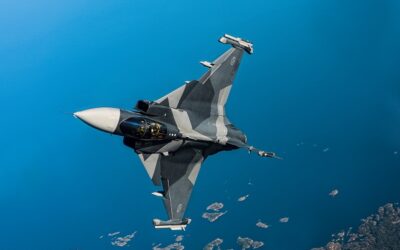China Reorganising, Refocusing and Repurposing
On 16 August the US DoD released to the public its annual report to Congress on the Chinese threat.
The 145-page report entitled Annual Report to Congress: Military and Security Developments Involving the People’s Republic of China attempts to cover an immense waterfront – and does a pretty good job of it. Although detail is missing, enough meat has been added to the bones of a well developed argument to satisfy even the most ravenous legislative appetite for fuelling concerns regarding the Asian giant. Since 2002 China’s leaders have seen the first two decades of the twenty-first century as a “period of strategic opportunity:” and the report makes no bones about it – they are pursuing that opportunity – economically, politically, financially, culturally and – yes – militarily.
Attempting to summarise such a report in a few paragraphs is an impossible task. We can, however, highlight just a few paragraphs that readers will find worthy of note: first, in examining the restructuring of the People’s Liberation Army (PLA).
“The PLA is undergoing the most comprehensive restructure in its history to become a force capable of conducting complex joint operations. The PLA strives to be capable of fighting and winning ‘informatised local wars’ – regional conflicts defined by real-time, data-networked command and control, and precision strike. Reforms seek to streamline command and control structures and improve jointness at all levels. Personnel cuts likely targeted non-combat personnel and rebalanced the preponderance of forces away from the PLA Army (PLAA). Training continued to focus on executing large-scale, complex joint operations. This included increasing exercise realism by evaluating unit performance during force-on-force confrontations against dedicated opposing-force units, strengthening strategic campaign training, and executing long-distance manoeuvres and mobility operations. The [government] also continued vigorous efforts to root out corruption in the armed forces.”
Later, the report turns to the all-important issue of China’s defence and aerospace industry, defining and scoping the fundamental strengths and weaknesses of the machine equipping the world’s largest armed forces.
“Missile and Space Industry. The majority of China’s missile programmes, including its ballistic and cruise missile systems, are comparable to other international top-tier producers. China’s production of a wide range of ballistic, cruise, air-to-air, and SAMs for the PLA and for export has probably been enhanced by upgrades to primary assembly and solid rocket motor production facilities. Though China has become one of the world’s most advanced producers of SAM systems, China has purchased Russia’s S-400 air defence system and may receive it in 2018. China’s space industry is rapidly expanding its ISR navigation, and communication satellite constellations while making considerable progress in space lift, human spaceflight, and lunar exploration programmes. China hopes to expand its space launch vehicle industry to support commercial launches and make rapid satellite launch services available to foreign customers. China will probably launch, assemble in-orbit, and operate a crewed Chinese space station before 2025.”
“Naval/Shipbuilding Industry. China is the top ship-producing nation in the world and has increased its shipbuilding capacity and capability for all types of military projects, including submarines, surface combatants, naval aviation, sealift, and amphibious assets. China’s two largest state-owned shipbuilders – the China State Shipbuilding Corporation and Shipbuilding Industry Corporation – collaborate in shared ship designs and construction information to increase shipbuilding efficiency. China now produces its naval gas turbine and diesel engines domestically – as well as almost all shipboard weapons and electronic systems – and is almost entirely self-sufficient with little dependence on traditional foreign suppliers for shipbuilding.”
“Armaments Industry. China’s production capacity continues to advance in almost every area of PLA ground systems, including armoured personnel carriers, assault vehicles, air defence artillery systems, artillery pieces, and new versions of main battle tanks and light tanks. China is capable of producing ground weapon systems at or near world-class standards; however, quality deficiencies persist with some export equipment.”
“Aviation Industry. China’s aviation industry has advanced to produce a large transport aircraft; modern fourth- to fifth- generation fighters incorporating low- observable technologies; modern reconnaissance and attack UAVs; and attack helicopters. China’s commercial aircraft industry has invested in high-precision and technologically advanced machine tooling and production processes, avionics, and other components applicable to the production of military aircraft. However, China’s aircraft industry remains reliant on foreign-sourced components for dependable, proven, high- performance aircraft engines. China’s infrastructure and experience for the production of commercial and military aircraft are improving as a result of China’s ongoing C919 commercial airliner and Y-20 large transport programmes.”
All in all, the report presents a reasonably fair and balanced picture of what has happened in China’s military machine over the last year. Additional sections deal with “PLA Progress in Becoming a Joint Force” and “Overwater Bomber Operations” – both subjects of great interest and complexity. There was a time during the Cold War when reports such as this (the regular Soviet Military Power of this reporter’s fond memory among them) were used by the hawks in DoD to demonise the enemy and scaremonger Congress into fuelling more and more demanding budget requests. In all honesty, there may still be a little of this – but it is less obvious than it once was and the conclusions the report reaches are arguably justified by the facts.
Readers are invited to access the full report at https://media.defense.gov/2018/Aug/16/2001955282/-1/-1/1/2018-CHINA-MILITARY-POWER-REPORT.PDF
























